
An overview of the various types and styles of guitars and some of the key differences you shoud know about. Read More...

Learn all about the included HiveMind custom modules and how to configure them for your site. Read More...

An overview of the HiveMind menu options including the top menu icon configuration. Read More...

A guide to the basic HiveMind customization options that can be configured within the template "index.php" file. Read More...

A guide to using the included the HiveMind typography styles in your site. Read More...

A look at some of the modules and techniques used in the demo content on the frontpage of the HiveMind demo. Read More...

An overview for customizing your logo and replacing the logo text with your organization or company name and logo. Read More...

An overview of how to customize your HiveMind in respects to the Internet Explorer PNGfix. Read More...
Continue learning how to configure and customize the HiveMind template with the following guides and tutorials available in the RocketTheme members forum board.

 A soft, non-abrasive, cloth will normally do the trick in conjunction with a polish of some sort. There are a number of guitar cloths and polishes available at your local music store and many can be purchased in a cleaning "kit". In a pinch you can use a standard furniture polish with a clean, soft cloth from home.
A soft, non-abrasive, cloth will normally do the trick in conjunction with a polish of some sort. There are a number of guitar cloths and polishes available at your local music store and many can be purchased in a cleaning "kit". In a pinch you can use a standard furniture polish with a clean, soft cloth from home. 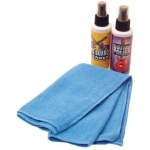 Clean all the surfaces of the body and headstock with the cloth and polish. I typically refrain from using polish on the neck of the guitar because it has a tendency to "gunk" up which results in slowing down hand action when playing.
Clean all the surfaces of the body and headstock with the cloth and polish. I typically refrain from using polish on the neck of the guitar because it has a tendency to "gunk" up which results in slowing down hand action when playing. A new set of strings can "breath new life" into the guitar and make it sound better. Strings are not overly expensive so this is something that can a part of your regular maintenance routine without breaking the bank.
A new set of strings can "breath new life" into the guitar and make it sound better. Strings are not overly expensive so this is something that can a part of your regular maintenance routine without breaking the bank.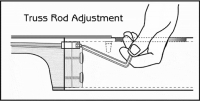 The truss rod is adjusted using an Allen wrench or a wrench designed by the guitar manufacturer. Bridge adjustments differ between acoustic and electric guitars and vary by brand.
The truss rod is adjusted using an Allen wrench or a wrench designed by the guitar manufacturer. Bridge adjustments differ between acoustic and electric guitars and vary by brand.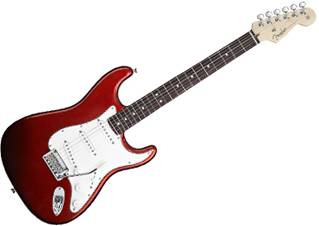 Also, input jacks and internal wiring should be checked occasionally for shorts and breaks. Many of these connections, when broken, can simply be re-soldered.
Also, input jacks and internal wiring should be checked occasionally for shorts and breaks. Many of these connections, when broken, can simply be re-soldered. Which strings are right for you is largely a matter of trial and error, over time. Various brands of strings will all have a different “feel” to you and after you have been playing a while you will find string brands that you prefer over others.
Which strings are right for you is largely a matter of trial and error, over time. Various brands of strings will all have a different “feel” to you and after you have been playing a while you will find string brands that you prefer over others. 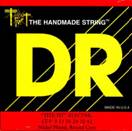 As a general rule you may want to consider using thinner gauge strings in the beginning, as these will be easier on your finger tips and cut down on some of the natural soreness.
As a general rule you may want to consider using thinner gauge strings in the beginning, as these will be easier on your finger tips and cut down on some of the natural soreness. 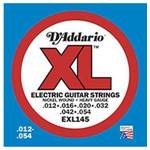 Recommended string sizes for the beginning student:
Recommended string sizes for the beginning student:



